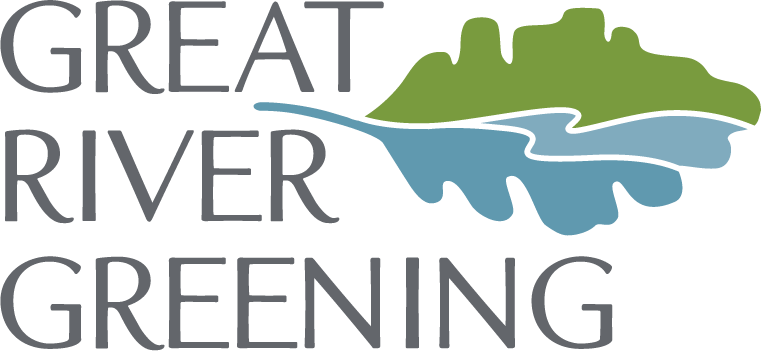Violets, Butterflies, and Bison—Restoring the Prairie Ecosystem
10/24/2023 - Spring Lake Park Reserve, Hastings, Dakota County.
Although violets, butterflies, and bison may seem unrelated, they are all “crucial missing prairie ecosystem components being returned to the landscape” says Sara Nelson, project manager at Great River Greening. According to the Minnesota Department of Natural Resources (MnDNR), only about 1% of Minnesota’s original native prairie remains today—making it one of the continent’s most endangered habitats.
This is why Great River Greening, together with our partners, is addressing critical biodiversity loss to protect, expand, and restore remnants of this incredibly vital ecosystem.
Since the spring of 2022, a dedicated group of volunteers, partners, and staff have been working together to eventually reintroduce the rare regal fritillary butterfly (Speyeria idalia) to the bison prairies at Spring Lake Park Reserve (SLPR) in Hastings. As part of the plan, they’re planting two specific species that the regal fritillary caterpillars must feed on to grow and mature: prairie violets (Viola pedatifida) and birdsfoot violets (Viola pedata).
Joe Walton, senior ecologist with Dakota County at SLPR, describes the regal fritillary “like a large monarch dipped in chocolate.” This butterfly, which once used to be a common sight fluttering over the prairie, is now listed as a species of special concern by the MnDNR. The regal fritillary is now only found at a few remnant prairies where healthy violet populations still exist.
Returning Violets to the Prairie
The “Bison Prairie” (more on the bison later!) at SLPR covers about 150 acres of former prairie that was converted to farmland in the 1800s and has been restored to prairie over the last few decades. Since then, no prairie violets existed in these acres.
“These species [prairie violets and birdsfoot violets] are often missing from prairie restorations due to the difficult nature of collecting their seed and propagating them,” says Sara Nelson. “When they are available on the market, they are often extremely expensive.” Why is that? This is partly due to the complex biology of the violets. When the violets’ seed pods are ripe, the pod “explodes” dispersing the seeds in several directions making them difficult to find on the ground and collect.
Project managers discovered early on that while it was possible to source prairie violet seeds from local nurseries, in many cases it turned out that these seeds came from parent plants growing far away from Dakota County. This wasn’t entirely ideal because the goal was to establish plants with locally-adapted genetics so the plants would be better suited to their ancestral environment.
Thankfully, with a little creativity (and a special collections permit!), Nelson and partners assembled a team of volunteers and Scientific and Natural Area (SNA) site stewards to collect seed from local populations of violets at nearby SNAs. Volunteers patiently monitored the ripeness of violet seed pods and used tiny jewelry bags tied to the violets to catch the seeds as they were ejected from the pods.
The results?
Volunteers collected nearly 90,000 violet seeds!
The next stage of the plan brought in University of Minnesota Extension educator Sam Talbot. Talbot is working to propagate dozens of native prairie plant species in Dakota County, including prairie violets. Following seed collection, Talbot experimented to find reliable ways to successfully germinate the seeds and then plant the seedlings in the greenhouse at Lebanon Hills Regional Park. Seedlings matured in “cone-tainers," or tall, cone-shaped containers that allow deep roots to develop.
These efforts are already starting to pay off. In October 2022, the first 100 seedlings were planted into the bison prairie at SLPR. Continuing on, volunteers transplanted an additional 900 seedlings into the prairie in June and September 2023! As the remaining seedlings grow and mature in the greenhouse, even more will be added to restore the prairie habitat.
Bringing Back Bison
The reintroduction of prairie violets coincided with another ambitious restoration at SLRP: the reintroduction of bison. Bison historically thrived on Minnesota’s prairies until colonization. Several organizations and agencies are working together to help restore North America’s largest land mammal to its home landscape in Minnesota, including the prairies of Dakota County.
In fall of 2022, Dakota County reintroduced a small herd of bison to SLRP . Violet volunteers were delighted to be among the first to get a sneak peek when the bison arrived. The bison will help to restore, manage, and diversify a 150-acre area within the park by doing what they do best: grazing! Bison feed mostly on grasses, and these grazing habits promote plant diversity by giving wildflowers a chance to compete with the surrounding tall grasses. Plus, as bison forage they help to disperse native seeds and work them into the soil with their hooves.
A Look Forward
As we look forward to the coming years, we’re excited to watch this prairie grow and thrive as these biological synergies become evident. One such synergy that is already apparent is the human aspect.
“For me the most rewarding part of this project has been developing a dense network of collaborators doing this meaningful work together,” says Nelson. “Every task, from checking the ripening of the seeds to the planting of the seedlings, felt like it was strengthening our friendships as well as our relationship with the plants and the prairie itself.”
The ambitious restoration of “missing species” at SLPR, including prairie violets, bison, and, eventually, regal fritillary butterflies represents a hopeful future for these species, as well as an opportunity for people to enjoy the process of caring for nature together.
What can you do to help us restore these prairie landscapes and address critical biodiversity loss in Minnesota?
Partner with us. Support Great River Greening. Sign-up for our newsletter so you’re among the first to know about our Spring 2024 volunteer events.
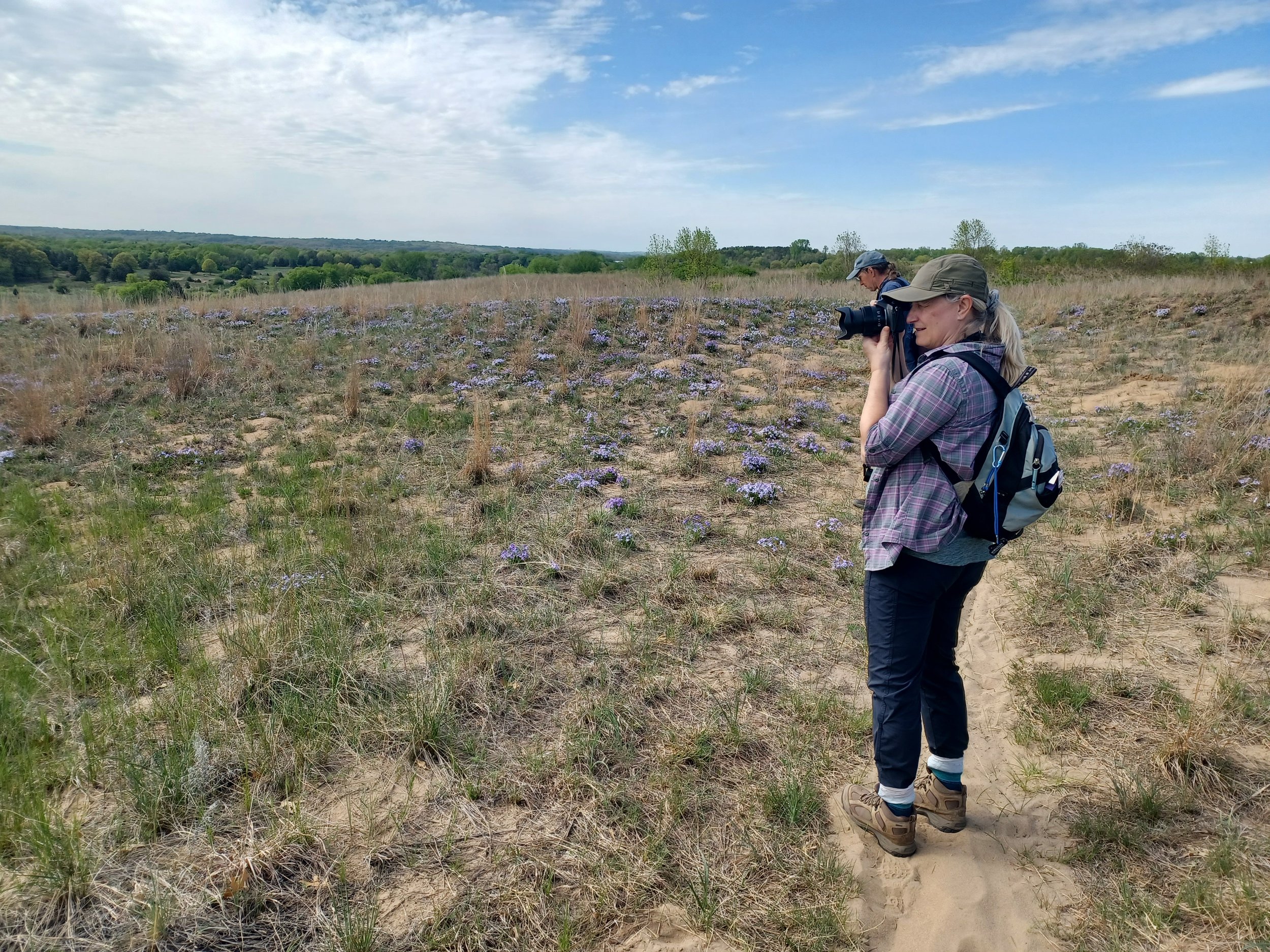
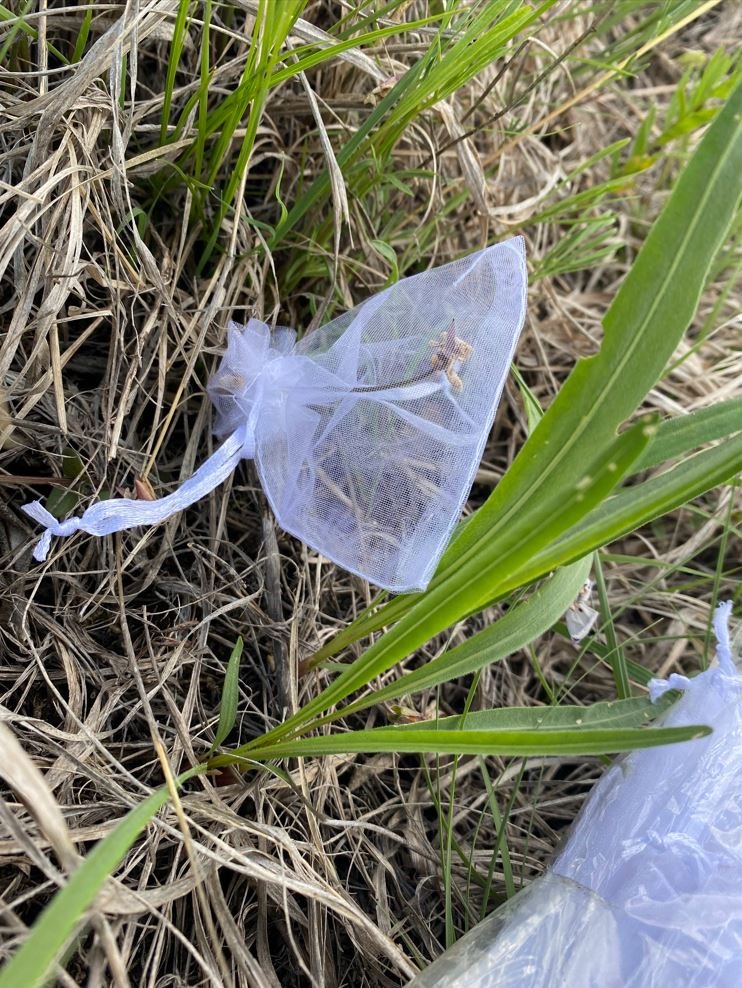
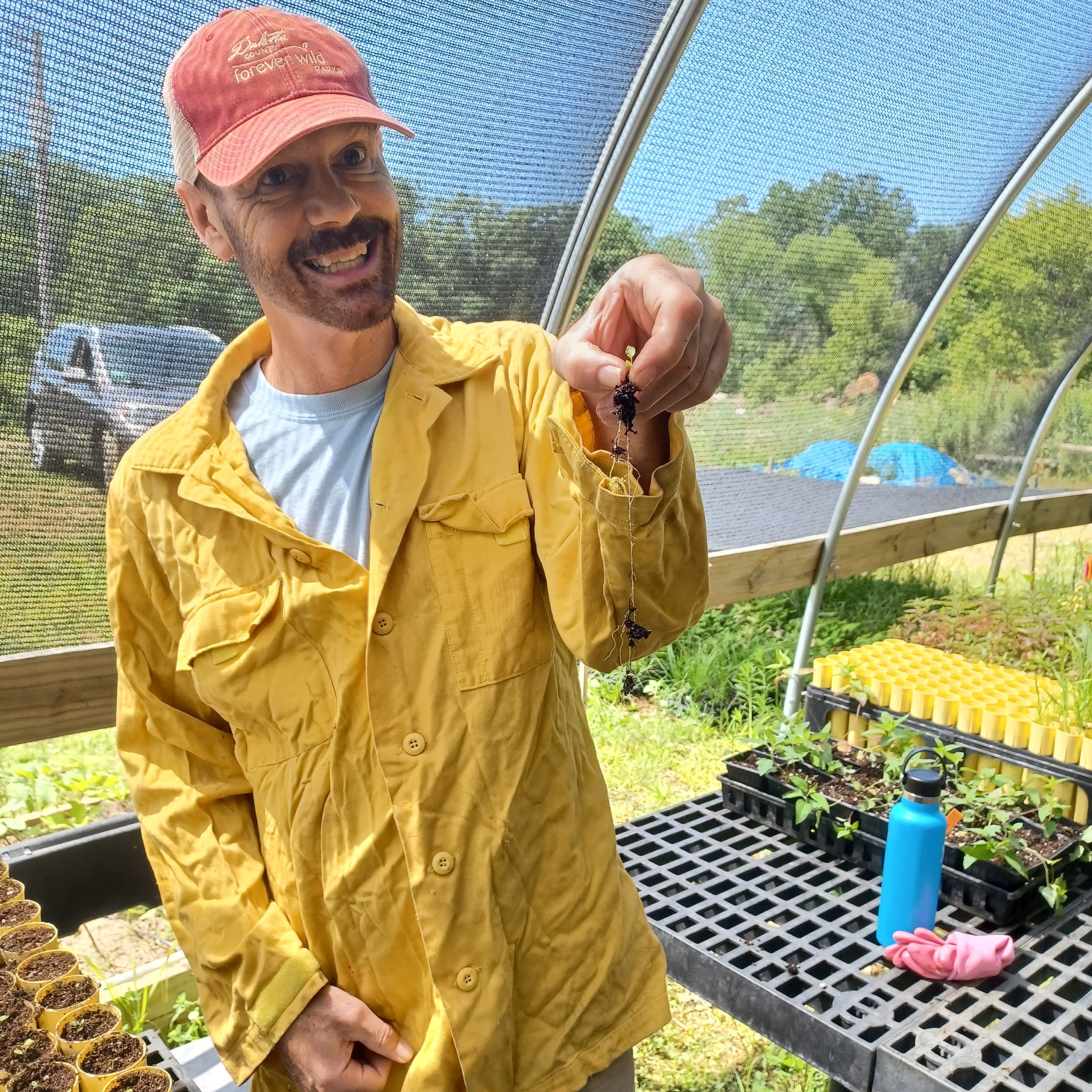
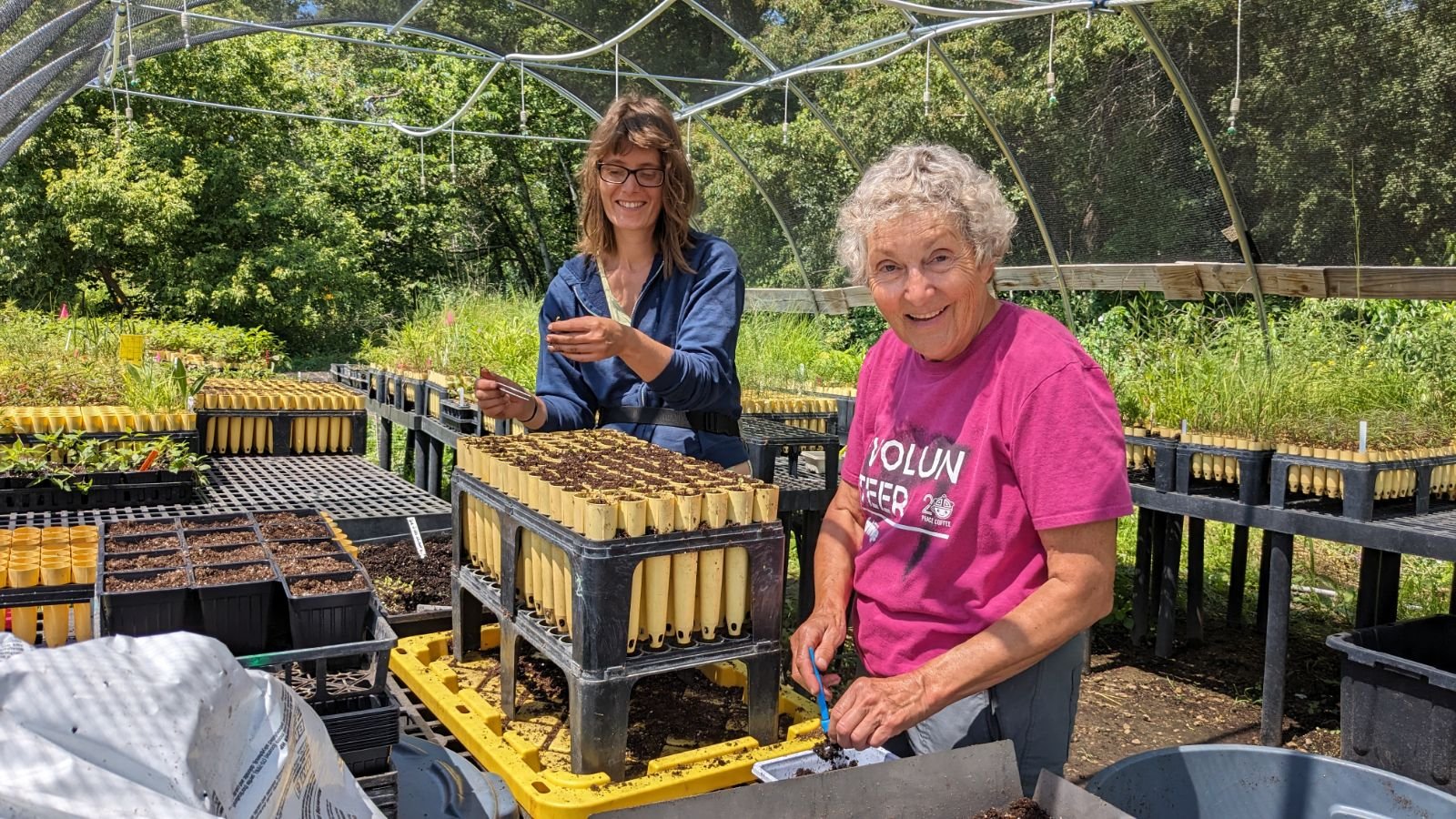
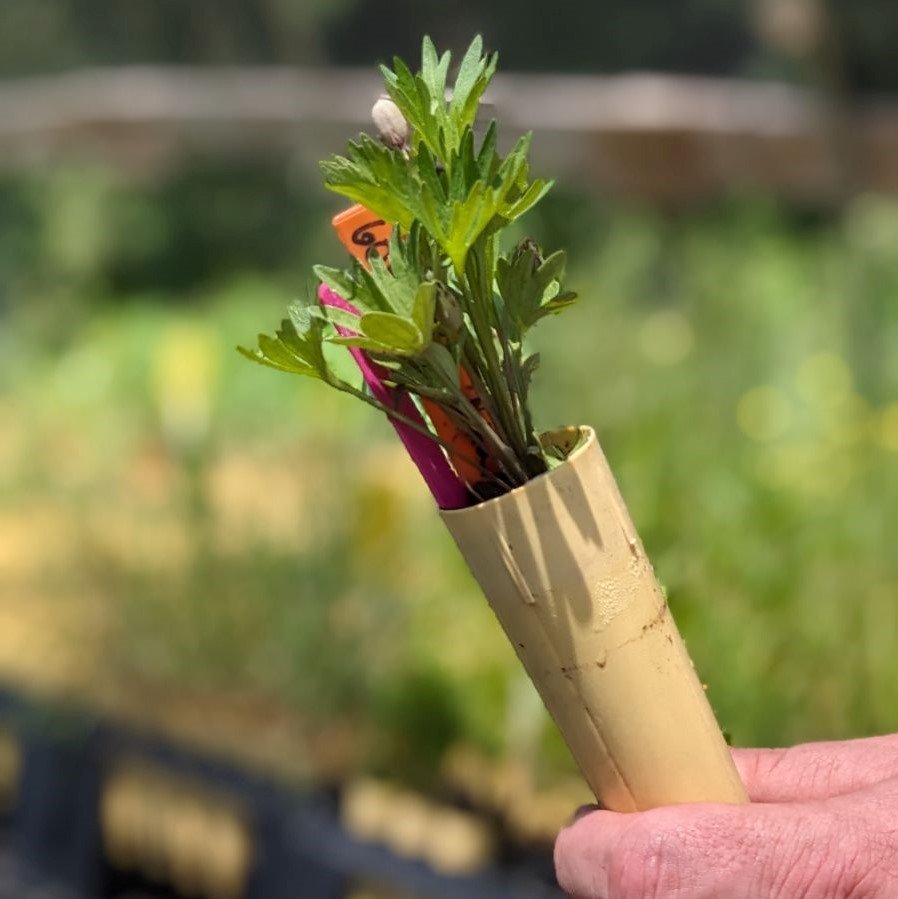
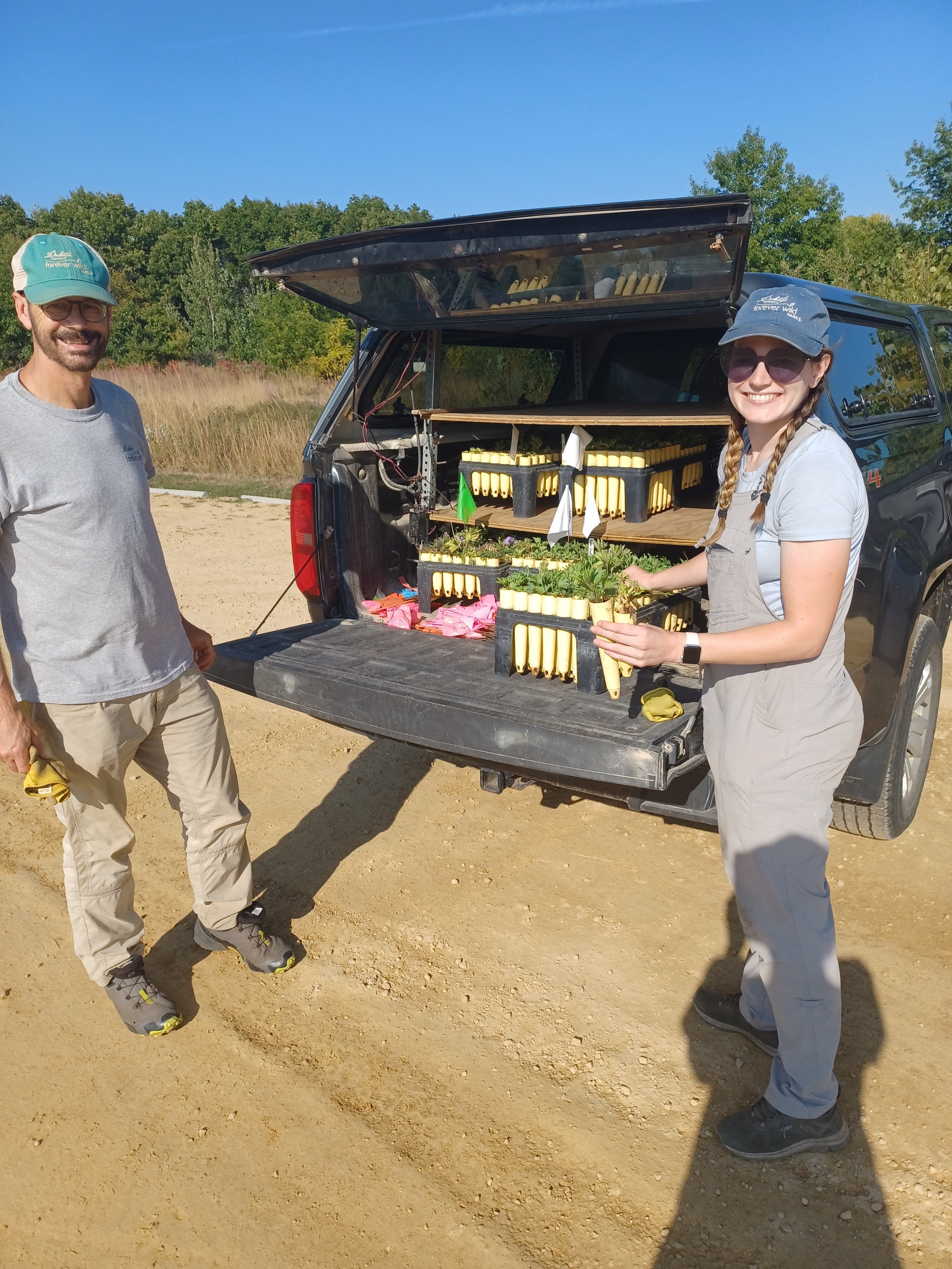
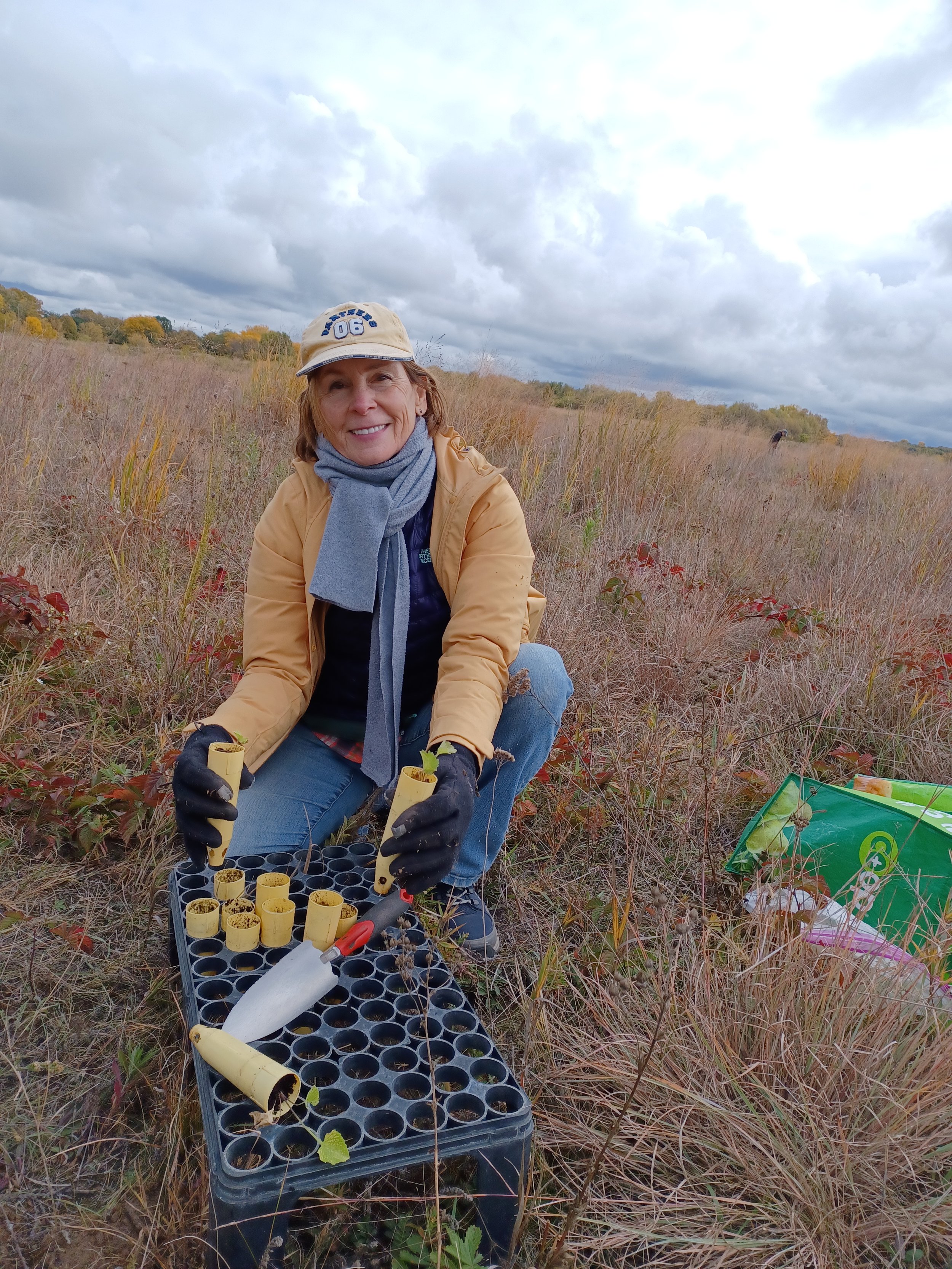
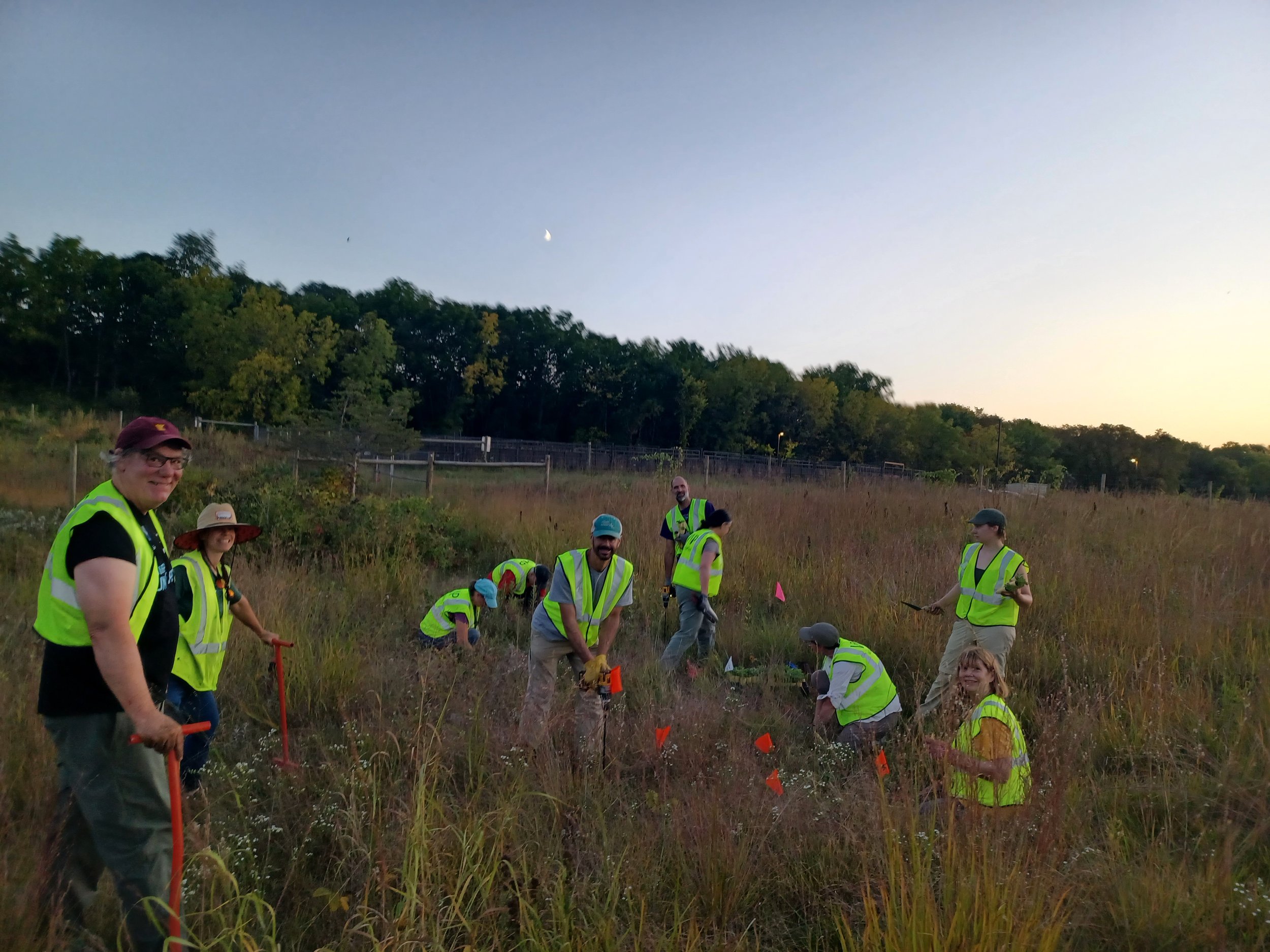
Photos by Sara Nelson unless otherwise specified.
Non-Gallery Photos: Closeup of a person's hands using a tweezers to transplant a violet seedling into soil (Becca Tucker); Volunteers and staff smile on a sunny day after having placed bags to catch seeds on "exploding" violets; Closeup of purple/pink violets in a field; Violet volunteers peek over the paddock fencing for a first glimpse of the new bison herd at SLRP; A volunteer plants a small violet plug into the Bison Prairie area at SLRP on a sunny day.
Thank you to our partners and funders:
Dakota County Parks
Minnesota Environment and Natural Resources Trust Fund (ENRTF) as recommended by the Legislative-Citizen Commission on Minnesota Resources (LCCMR)
University of Minnesota Extension
National Fish and Wildlife Foundation
Minnesota Department of Natural Resources (MnDNR) Scientific and Natural Area (SNA) Program
Sherburne National Wildlife Refuge
